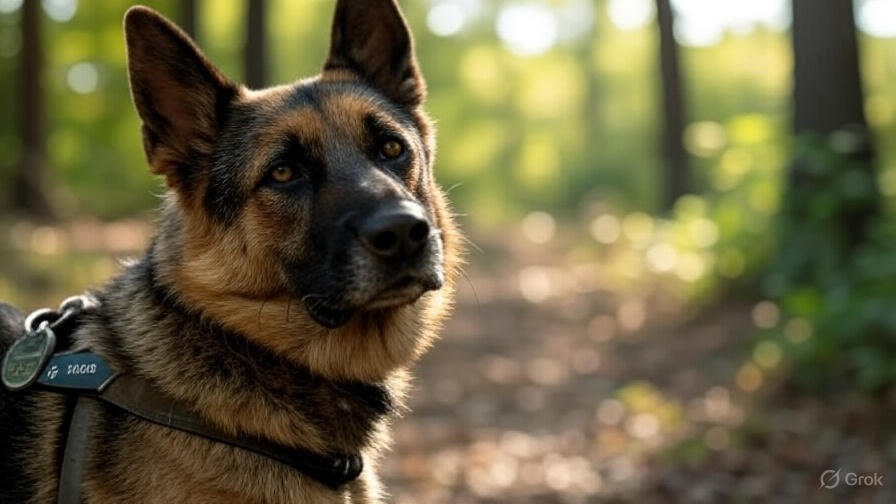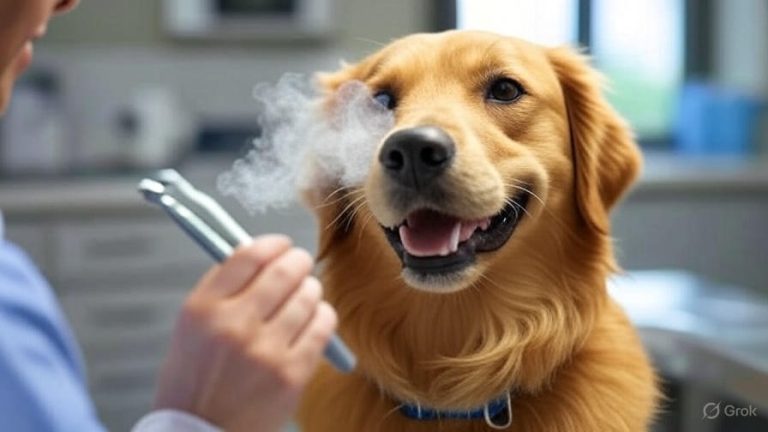How Accurate Are Cadaver Dogs?
Law enforcement agencies worldwide rely on specially trained canines to locate human remains in criminal investigations and disaster recovery operations. These remarkable animals, known as cadaver dogs or human remains detection (HRD) dogs, possess an extraordinary ability to detect decomposition odors that humans cannot perceive. But just how accurate are these four-legged investigators?
The accuracy of cadaver dogs ranges from 95% to 100% under optimal conditions, making them one of the most reliable tools in forensic investigations. However, their effectiveness depends on numerous factors including training quality, environmental conditions, handler expertise, and the age of the remains.
The Science Behind Cadaver Dog Detection
Cadaver dogs detect human remains through their incredibly sensitive olfactory system. A dog’s nose contains approximately 300 million scent receptors compared to humans’ mere 6 million. This biological advantage allows them to detect volatile organic compounds (VOCs) released during human decomposition at concentrations as low as parts per trillion.
The decomposition process produces over 400 different chemical compounds, creating a unique scent signature that trained detection dogs can identify. These compounds include putrescine, cadaverine, skatole, and various fatty acids that form during the breakdown of human tissue. Research shows that dogs can detect these odors even when remains have been buried for decades or submerged underwater.
Scientists have discovered that human decomposition creates a distinct chemical profile different from animal remains. This specificity allows properly trained cadaver dogs to distinguish between human and animal decomposition, though this skill requires extensive training and regular practice to maintain accuracy.
Training Methods That Determine Accuracy
The accuracy of cadaver dogs depends heavily on their training methodology. Professional training programs typically last 12-18 months and involve exposure to various stages of human decomposition. Trainers use actual human tissue samples, bones, and synthetic training aids that replicate decomposition odors.
During training, dogs learn to alert handlers when they detect human remains through specific behaviors like sitting, barking, or pawing at the ground. The consistency of these alerts directly impacts the dog’s reliability in real-world situations. Trainers reinforce correct responses with positive reinforcement while correcting false alerts to maintain high accuracy standards.
Continuous training proves essential for maintaining detection accuracy. Working cadaver dogs participate in regular training exercises using fresh training materials to keep their skills sharp. Dogs that don’t receive consistent training may experience decreased accuracy over time, particularly in challenging environmental conditions.
Environmental Factors Affecting Performance
Weather conditions significantly impact cadaver dog accuracy. High temperatures can intensify decomposition odors, making detection easier, while cold weather may suppress scent molecules and reduce detection range. Wind patterns affect how odors travel, potentially carrying scents away from the search area or creating false directional cues.
Humidity levels also play a crucial role in scent detection. High humidity can enhance scent retention in the environment, while dry conditions may cause odors to dissipate quickly. Rain can wash away surface odors but may also help release trapped scents from buried remains.
Terrain complexity presents another challenge for detection accuracy. Dense vegetation, rocky surfaces, and urban environments can interfere with scent trails and complicate search patterns. Dogs working in these conditions may require longer search times and may experience reduced accuracy compared to open, flat terrain.
Handler Expertise and Its Impact
The skill level of the dog handler directly influences detection accuracy. Experienced handlers understand their dog’s behavioral patterns, recognize subtle alert signals, and can interpret environmental factors that might affect performance. They know when their dog is working a scent trail versus showing interest in unrelated odors.
Handler bias can negatively impact accuracy if the handler unconsciously influences the dog’s behavior or misinterprets natural curiosity as an alert. Professional handlers train to remain neutral during searches and allow their dogs to work independently without inadvertent cues.
Communication between handler and dog develops over years of partnership. Handlers who work regularly with the same dog typically achieve higher accuracy rates because they understand their partner’s unique working style and alert behaviors.
Age and Condition of Remains
The age of human remains significantly affects detection accuracy. Fresh remains produce strong odor signatures that dogs can detect from considerable distances. As decomposition progresses, the scent profile changes, potentially making detection more challenging depending on environmental preservation conditions.
Skeletal remains present unique detection challenges. While bones retain detectable odors for extended periods, the scent signature differs from soft tissue decomposition. Dogs trained specifically on skeletal remains typically maintain high accuracy rates, but those trained primarily on fresh tissue may show reduced performance.
Burial depth affects detection success rates. Shallow graves allow odors to migrate to the surface more easily, while deep burials may contain scents below the dog’s detection threshold. Research indicates that detection accuracy decreases significantly when remains are buried deeper than six feet.
Documented Success Rates in Real Cases
Field studies demonstrate impressive accuracy rates for well-trained cadaver dogs. A comprehensive study of police K-9 units found that cadaver dogs achieved 96% accuracy in controlled testing environments. Real-world success rates vary but consistently exceed 90% when proper protocols are followed.
Cold case investigations showcase the long-term reliability of cadaver dog detection. Dogs have successfully located remains buried for over 30 years, demonstrating their ability to detect trace amounts of decomposition products that persist in soil long after soft tissue has disappeared.
Mass disaster response operations provide additional evidence of cadaver dog effectiveness. During the 9/11 World Trade Center recovery, cadaver dogs located human remains in conditions previously thought impossible, proving their value in complex search scenarios.
Limitations and Challenges
Despite their remarkable abilities, cadaver dogs face certain limitations that can affect accuracy. Contaminated search areas where multiple decomposition sources exist can create confusion and potentially lead to false alerts. Urban environments with heavy traffic, construction, or industrial odors may mask decomposition scents.
Training limitations also impact performance. Dogs trained on specific decomposition stages may show reduced accuracy when encountering remains in different states of decay. This emphasizes the importance of comprehensive training programs that expose dogs to various decomposition scenarios.
Physical fatigue affects detection accuracy during extended searches. Dogs working for hours in challenging conditions may experience decreased sensitivity and increased error rates. Professional search teams rotate dogs regularly to maintain optimal performance levels.
Technological Advances Supporting Accuracy
Modern technology enhances cadaver dog capabilities without replacing their unique skills. GPS tracking systems allow handlers to map search patterns and identify areas of repeated interest. This technology helps validate alerts and provides valuable data for investigators.
Scent preservation techniques have improved training effectiveness. Researchers now understand how to properly collect, store, and present training scents to maintain their integrity over time. These advances ensure that dogs receive consistent training experiences that translate to real-world accuracy.
Chemical analysis tools complement cadaver dog searches by confirming detection results. Portable devices can analyze soil samples from alert locations to verify the presence of decomposition compounds, providing scientific validation of dog alerts.
Best Practices for Optimal Accuracy
Search teams follow established protocols to maximize cadaver dog accuracy. These include conducting systematic grid searches, maintaining detailed records of dog behavior, and using multiple dogs to confirm significant alerts. Teams also consider environmental factors when planning searches and adjust techniques accordingly.
Regular certification testing ensures that working cadaver dogs maintain their detection skills. Professional organizations establish standards for testing and certification, requiring dogs to demonstrate consistent accuracy before deployment in actual cases.
Quality control measures include blind testing, where handlers don’t know the location of training materials. This prevents unconscious handler influence and provides objective assessment of dog performance.
Legal and Forensic Applications
Courts generally accept cadaver dog evidence as reliable investigative tools, though the legal standards vary by jurisdiction. The accuracy record of properly trained and certified dogs supports their use in criminal investigations, though courts typically require additional evidence to support convictions.
Forensic teams use cadaver dogs as initial screening tools to identify areas requiring detailed examination. This approach maximizes investigation efficiency while maintaining scientific rigor in evidence collection.
Defense attorneys may challenge cadaver dog evidence by questioning training records, handler qualifications, or environmental factors that could affect accuracy. This scrutiny reinforces the importance of maintaining high training standards and detailed documentation.
The Future of Cadaver Dog Detection
Research continues to improve cadaver dog training methods and accuracy rates. Scientists study the chemical composition of decomposition to develop better training aids and understand how environmental factors affect scent detection.
Breeding programs focus on developing dogs with enhanced scenting abilities specifically for human remains detection. These programs select for traits that improve detection accuracy while maintaining the temperament necessary for search work.
Integration with other detection technologies shows promise for improving overall search effectiveness. Combining cadaver dogs with ground-penetrating radar, thermal imaging, and chemical sensors creates comprehensive search capabilities that exceed the limitations of any single method.
Conclusion
Cadaver dogs represent one of the most accurate and reliable tools available for locating human remains. Their 95-100% accuracy rate under optimal conditions, combined with their ability to detect decomposition products that persist for decades, makes them invaluable assets in forensic investigations.
The key to maintaining high accuracy lies in comprehensive training, skilled handlers, and proper deployment protocols. While environmental factors and case-specific challenges can affect performance, well-trained cadaver dogs consistently demonstrate remarkable detection abilities that no technology can currently replicate.
As forensic science continues to advance, cadaver dogs will likely remain essential team members in death investigations. Their unique biological capabilities, combined with ongoing improvements in training methods and supporting technologies, ensure that these remarkable animals will continue serving justice with exceptional accuracy.
The investment in quality training programs, regular certification, and proper deployment protocols pays dividends in successful case resolutions and brings closure to families seeking answers about missing loved ones. The accuracy of cadaver dogs ultimately depends on the commitment to excellence in every aspect of their selection, training, and deployment.







